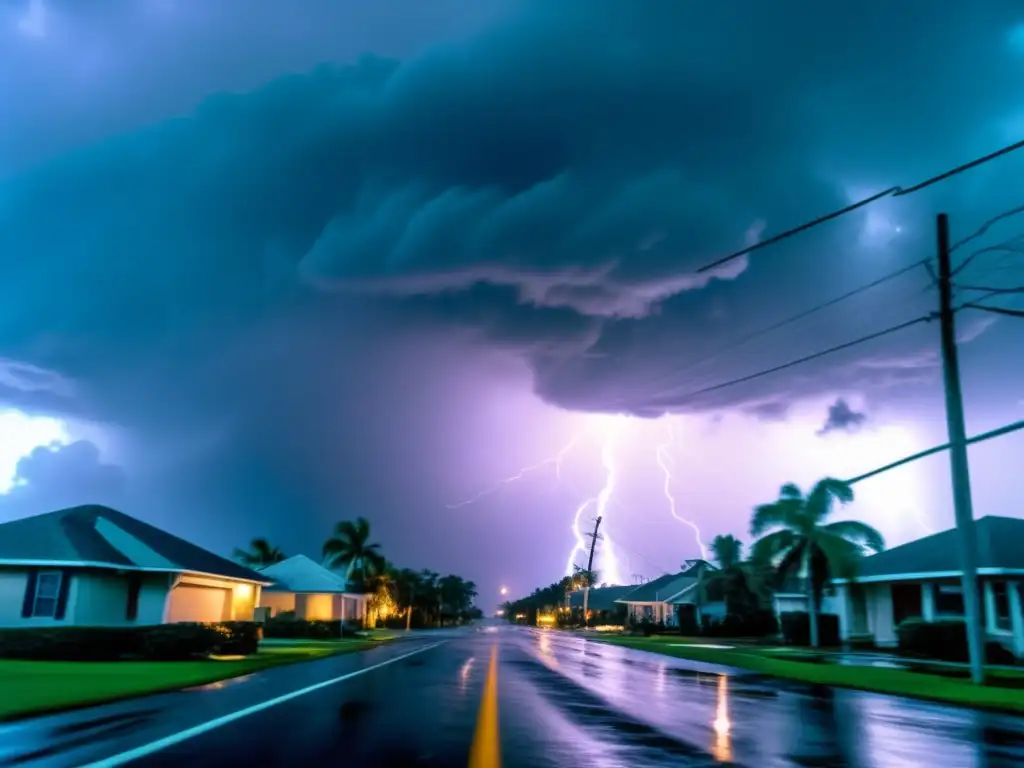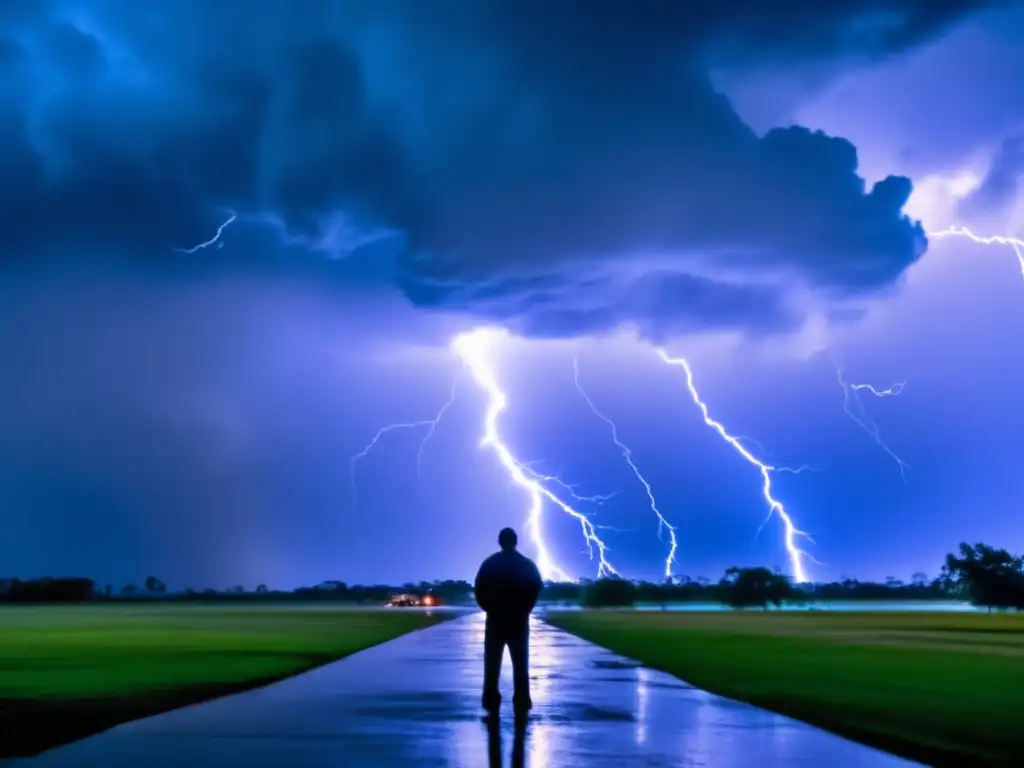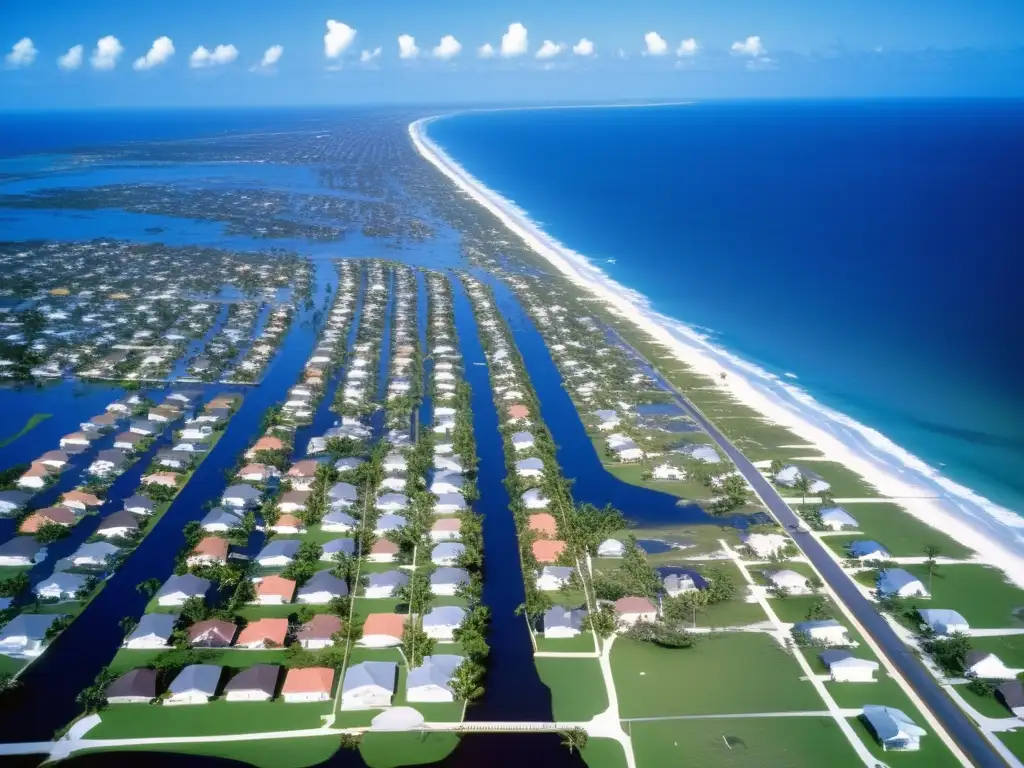Case Study: The Meteorological History Of Hurricane Andrew

Case Study: The Meteorological History of Hurricane Andrew
Introduction
In August 1992, Hurricane Andrew had a tremendous impact on South Florida. It caused widespread destruction and claimed the lives of 65 people in the U.S. and the Bahamas. The category five hurricane was one of the most intense storms to ever hit the United States. It is essential to analyze the meteorological history of this hurricane to understand its formation, its evolution, and the reasons behind its intensity.
The Formation of Hurricane Andrew

The Birth of the Storm
The origins of Hurricane Andrew date back to August 16, 1992, when a tropical wave emerged off the west coast of Africa. Over time, this disturbance moved across the Atlantic, and by August 22, it had intensified into a tropical depression. At that point, the storm was located east of the Lesser Antilles and was moving west-northwest at 20–30 mph.
A Favorable Environment for Growth
The depression continued to intensify, reaching tropical storm status on August 17. The storm quickly grew stronger in the next few days as it encountered ideal conditions for growth. The sea surface temperatures were high, and there was relatively little wind shear, which is when winds blow at different directions or speeds at different levels of the atmosphere. These factors helped fuel the storm's development, and by August 22, it had become Hurricane Andrew, with maximum sustained winds of 75 mph.
The Role of Warm Water
Warm water plays a critical role in a hurricane's development, and it was no exception in the case of Hurricane Andrew. The storm passed over very warm waters, which provided an abundant source of energy for the storm to intensify. The Gulf of Mexico is particularly warm, and as the storm approached it, Hurricane Andrew intensified rapidly, going from a category two to a category five hurricane in just 24 hours.
The Intensity of Hurricane Andrew

The Perfect Storm
Several factors contributed to Hurricane Andrew's intensity. One factor was the absence of wind shear, which allowed the storm to develop a well-defined eye, which is a characteristic of a powerful hurricane. Additionally, the presence of very warm water in the Gulf of Mexico provided abundant fuel for the storm to grow even stronger. These factors combined to create the "perfect storm" that led to Hurricane Andrew's devastating impact on South Florida.
The Eyewall
The eyewall is the area of a hurricane immediately surrounding the eye and containing the storm's most intense winds. In the case of Hurricane Andrew, the eyewall was particularly intense and destructive. The storm produced sustained winds of up to 165 mph and gusts as high as 177 mph, which caused widespread devastation and destruction in its path.
The Impact of Hurricane Andrew
Hurricane Andrew made landfall on August 24, 1992, near Homestead, Florida. The storm's intensity was responsible for the significant damage, including the destruction of over 25,000 homes, the damage of 100,000 others, and the deaths of 26 people in the U.S. alone. The total cost of the damages was estimated at $27 billion, making it the costliest hurricane in U.S. history at the time.
The Lesson Learned from Hurricane Andrew

Preparedness and Response
Hurricane Andrew highlighted the importance of preparedness and quick response during a storm. It made it clear that hurricanes could be incredibly destructive and that taking necessary precautions could save lives and minimize damage. Additionally, the storm prompted improvements in storm tracking and forecasting, which have helped to better warn people in the path of storms and prepare adequately.
Building Codes and Standards
Hurricane Andrew also led to sweeping changes in building codes and standards, particularly in Florida, where many of the structures were destroyed by the storm. These updated standards required more robust and fortified construction, particularly for structures in hurricane-prone areas. The enhanced standards led to safer buildings and infrastructure that could withstand the powerful effects of hurricanes in the future.
Frequently Asked Questions

-
What is Hurricane Andrew?
Hurricane Andrew was one of the most intense hurricanes to ever hit the United States, making landfall in South Florida in August 1992. It was a category five hurricane and caused widespread destruction, costing billions of dollars in damages.
-
What factors contributed to Hurricane Andrew's intensity?
The absence of wind shear, the high sea surface temperature, particularly in the Gulf of Mexico, and the well-defined eye contributed to Hurricane Andrew's intensity.
-
What was the impact of Hurricane Andrew?
Hurricane Andrew caused widespread destruction, including the destruction of over 25,000 homes and damages of 100,000 others. It also claimed 65 lives in the U.S. and the Bahamas. The total cost of the damages was estimated at $27 billion.
-
What lessons were learned from Hurricane Andrew?
Hurricane Andrew highlighted the importance of preparedness and quick response during a storm. It also led to sweeping changes in building codes and standards, particularly in hurricane-prone areas, making buildings and infrastructure more resilient.
-
Who was affected by Hurricane Andrew?
South Florida, particularly Homestead, was the most severely affected by Hurricane Andrew. The storm also had an impact on the Bahamas before making landfall in the U.S.
Conclusion
Hurricane Andrew was one of the most intense and destructive storms to ever hit the United States. Its impact highlighted the critical importance of preparedness and quick response during a storm. The storm led to important changes in building codes and standards, leading to safer buildings and infrastructure that could withstand the effects of hurricanes. Understanding the meteorological history of Hurricane Andrew is critical to prepare for future storms and minimize damage and loss of life.
Those who live in hurricane-prone areas should be aware of the factors that contribute to hurricane formation and intensity, such as warm water and low wind shear. Additionally, preparedness and quick response are essential in minimizing damage and saving lives in the event of a storm. By learning from past hurricanes like Andrew, we can better protect ourselves and our communities from the destructive effects of these powerful storms.
Additional Resources

- NOAA National Hurricane Center: https://www.nhc.noaa.gov/
- National Weather Service: https://www.weather.gov/
- Federal Emergency Management Agency (FEMA): https://www.fema.gov/
 Hurricanes And Tornadoes: What Sets Them Apart?
Hurricanes And Tornadoes: What Sets Them Apart? What Makes A Hurricane 'Major'?
What Makes A Hurricane 'Major'? The Most Hurricane-Prone Regions In The World
The Most Hurricane-Prone Regions In The WorldIf you want to discover more articles similar to Case Study: The Meteorological History Of Hurricane Andrew, you can visit the Basic knowledge about hurricanes: category.
Leave a Reply

Articulos relacionados: